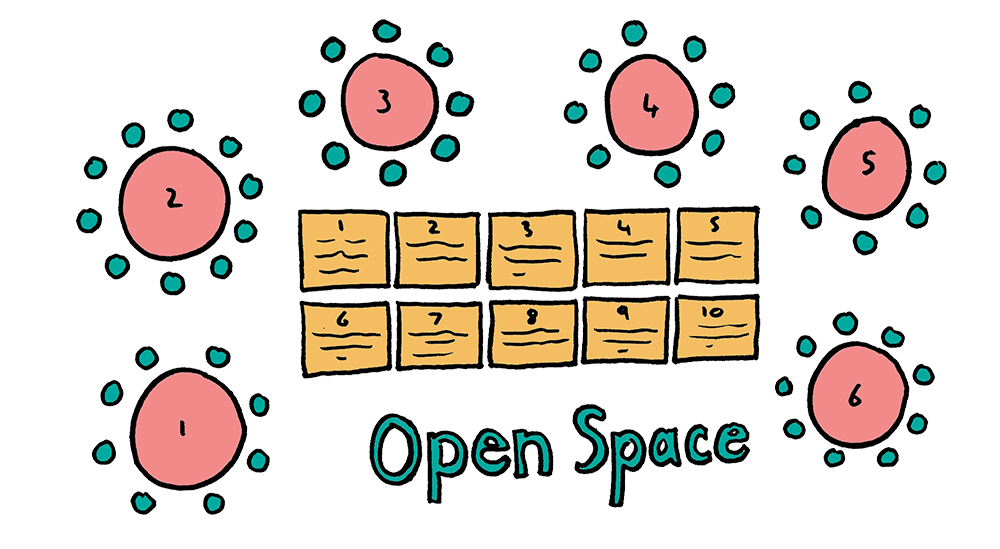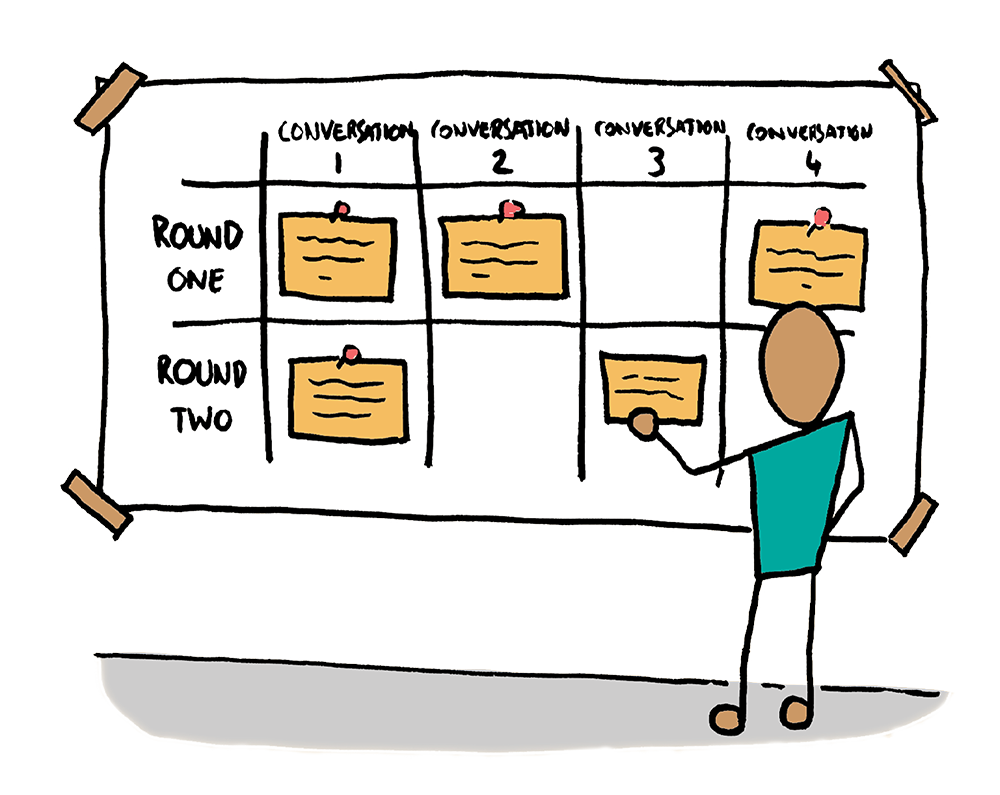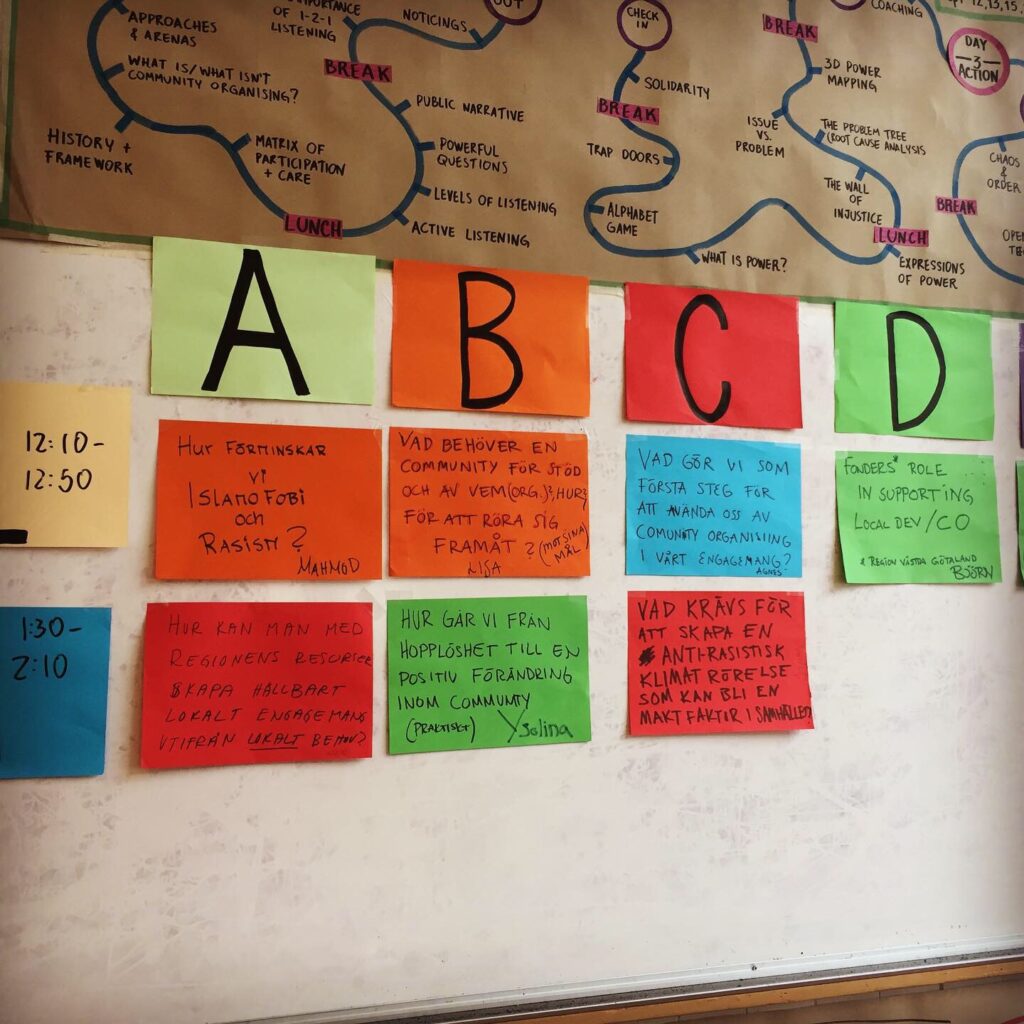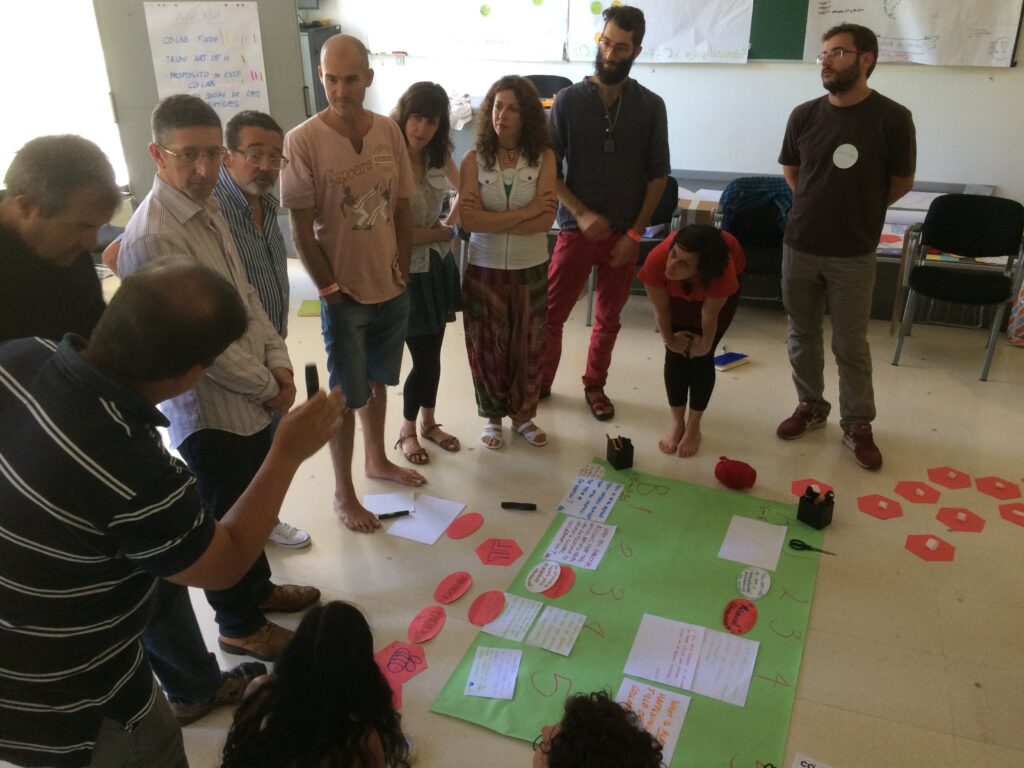Open Space Technology
Open Space Technology has been defined as:

- A simple, powerful way to catalyze effective working conversations and truly inviting organizations — to thrive in times of swirling change.
- A methodological tool that enables self-organizing groups of all sizes to deal with hugely complex issues in a very short period of time.
- A powerful group process that supports positive transformation in organizations, increases productivity, inspires creative solutions, improves communication and enhances collaboration.
- The most effective process for organizations and communities to identify critical issues, voice their passions and concerns, learn from each other, and, when appropriate, take collective responsibility for finding solutions.
- The goal of an Open Space Technology meeting is to create time and space for people to engage deeply and creatively around issues of concern to them. The agenda is set by people with the power and desire to see it through, and typically, Open Space meetings result in transformative experiences for the individuals and groups involved.
What is Open Space Technology best used for?
Open Space Technology is useful in almost any context including strategic direction setting, envisioning the future, policy making, conflict resolution, morale building, consultation with stakeholders, community planning, collaboration and deep learning aboutissues and perspectives.

When is Open Space Technology the best meeting format to use?
Any situation in which there is:
- A real issue of concern
- Diversity of players
- Complexity of elements
- Presence of passion (including conflict)
- A need for a quick decision
- Open Space will work under all of these circumstances. It is only inappropriate when the outcome of the meeting is predetermined or if sponsors are not prepared to change as a result of the meeting.
What outcomes can I expect from an Open Space Technology Meeting?
Open Space Technology meetings can produce the following deliverables:
- Every single issue that anybody cares about enough to raise will be “on the table”
- All issues will receive as much discussion as people care to give them
- All discussion will be captured in a book, and made available to the participants
- All issues will be prioritized
- Related issues will be converged
- Responsibility will be taken for next step actions

- In meetings of one and a half or two and a half days duration, all of these deliverables will be achieved with deep conversation and commitment to action.
- Meetings of a shorter duration will have many of these positive effects, but typically in meetings of a day or less, there is more emphasis on conversation and less on action.
How does an Open Space Technology meeting work?

Open Space operates under four principles and one law. The four principles are:
- Whoever comes are the right people
- Whatever happens is the only thing that could have happened
- When it starts is the right time
- When it’s over it’s over
The Law is known as the Law of Two Feet (or Law of Mobility):”If you find yourself in a situation where you are not contributing or learning, move somewhere where you can.”
The four principles and the law, work to create a powerful event motivated by the passion and bound by the responsibility of the participants.
What does Open Space look like?
A meeting room prepared for Open Space has a circle of chairs in the middle, letters or numbers around the room to indicate meeting locations, a blank wall that will become the agenda and a news wall for recording and posting the results of the dialogue sessions.
Essentially an Open Space meeting proceeds along the following process:
- Group convenes in a circle and is welcome by the sponsor. The facilitator provides an overview of the process and explains how it works.
- Facilitator invites people with issues of concern to come into the circle, write the issue on a piece of quarter size flip chart paper and announce it to the group. These people are “conveners.”
- The convener places their paper on the wall and chooses a time and a place to meet. This process continues until there are no more agenda items left to call.
- The group then breaks up and heads to the agenda wall, by now covered with a variety of sessions. Participants take note of the time and place for sessions they want to be involved in.
- There is a “Market Place” negotiation to join any similar conversations which require agreement of people calling those conversations being negotiated
- Dialogue sessions convene for the remaining time of the meeting. Recorders determined by each group capture the important points and post the reports on the news wall. All of these reports will be rolled into one document by the end of the meeting.
- Following a closing or a break, the group might move into convergence, a process that takes the issues that have been discussed and attaches action plans to them to “get them out of the room.”
- The group then finishes the meeting with a closing circle where people are invited to share comments, insights, and commitments arising from the process.

